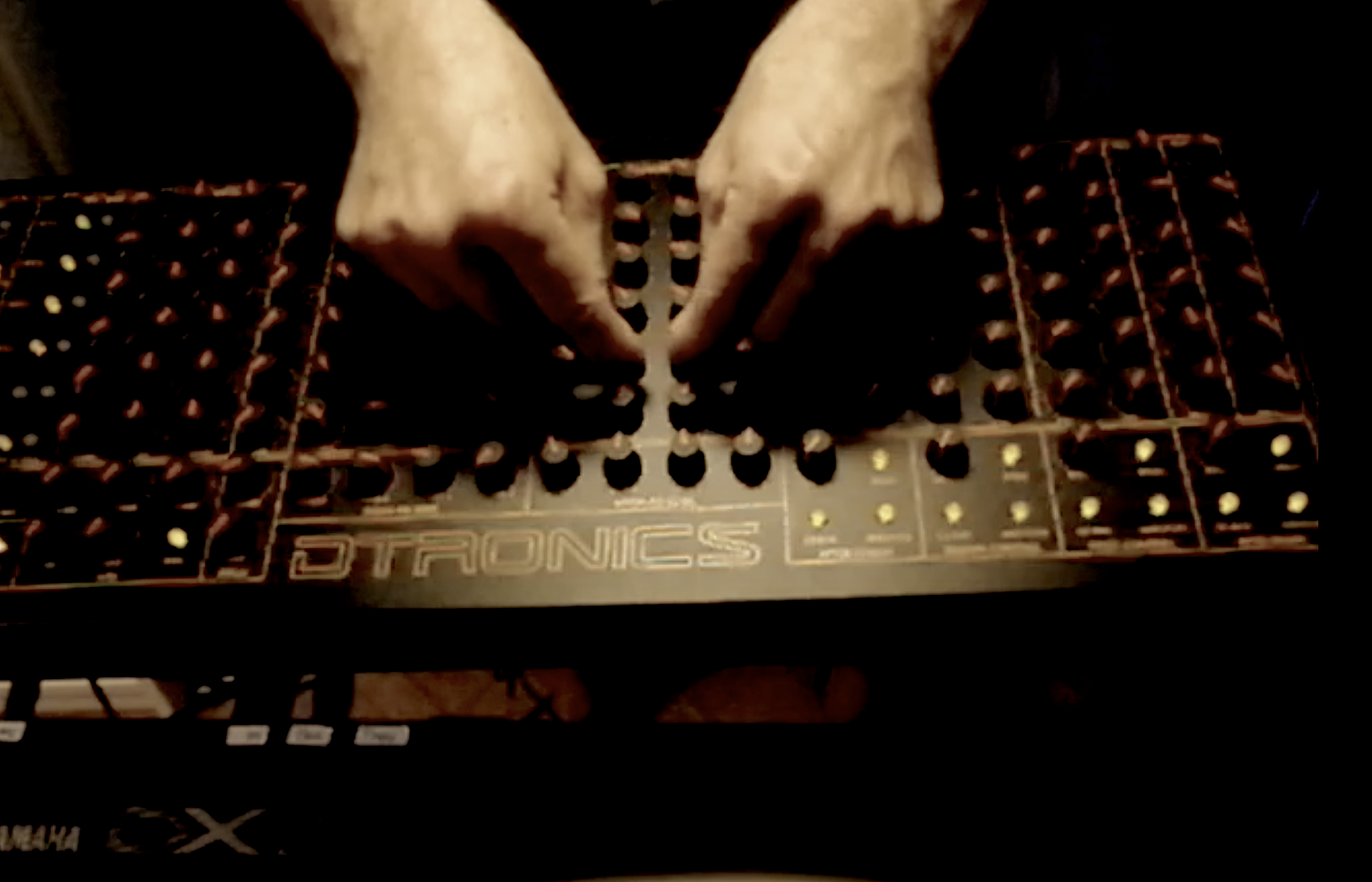Introducing the MODX Music Synthesizer
The all new MODX Music Synthesizer is all about Sound, Control and Mobility. The great sound and deep control are based on the flagship MONTAGE Music Synthesizer. The lightweight design of each MODX model make them the perfect professional instrument for the mobile musician. Whether you are a synthesist in need of cutting-edge sounds, a keyboardist who is all about electric pianos, organs and pads or a modern pianist focused on expressive pianos and great feel, the Yamaha MODX Music Synthesizer delivers:
Sound
It all starts with great sound. Based on the same synthesis technology found in the award-winning MONTAGE Music Synthesizer, and featuring 192-note total polyphony, MODX is powered by two synthesis technologies:
Advanced Wave Memory (AWM2) – waveform playback and subtractive synthesis engine
A proprietary waveform technology developed by Yamaha R&D, AWM2 allows longer, more natural decay, more articulations and variations and higher quality samples. The result is highly realistic instrument sounds, rivaling the quality of huge computer sample libraries coupled with the stability and reliability of hardware. MODX features 5.67 Gb of Waveform ROM and 1 Gb of User Flash Memory and 128-note stereo polyphony. Expressive concert grand pianos, breathtaking orchestral instruments, lush synth pads and textures, acoustic and electric guitars, punchy and defined drum kits – and more – are at your fingertips with MODX. Waveform content is just the beginning: MODX features powerful synthesis tools like 18 resonant filter type, pitch/amplitude/filter multistage EG, LFO, and EQ per Element:
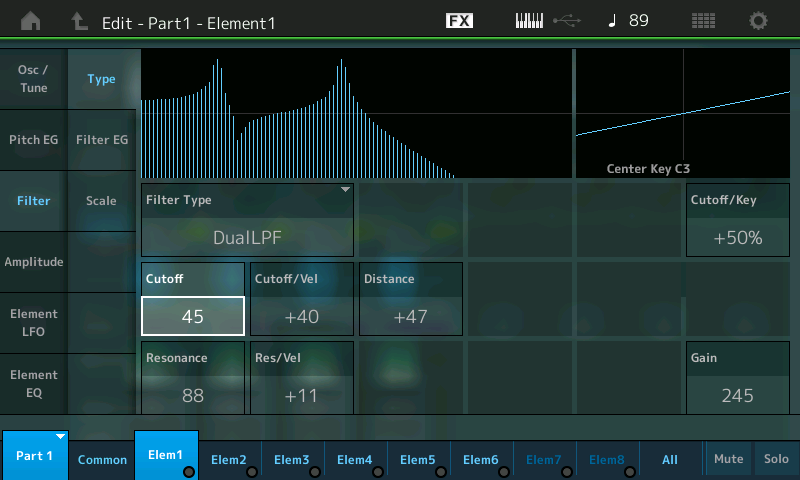
Flash Memory
With the 1 Gb of User Flash Memory, you can load in your own custom samples – or load in libraries like the Bösendorfer 290 Imperial Grand Piano, Chick Corea Mark V Electric Piano or the KAPro CS80 Collection (all available at yamahamusicsoft.com).
8-Operator Frequency Modulation (FM-X) – synthesis engine
A modern version of the FM (Frequency Modulation) synthesis technology Yamaha introduced in the 1980s with products like the DX7, FM-X greatly expands traditional FM by adding more waveform shaping options, more modulators and carriers, resonant filters, DSP and direct real-time control of FM-X parameters:
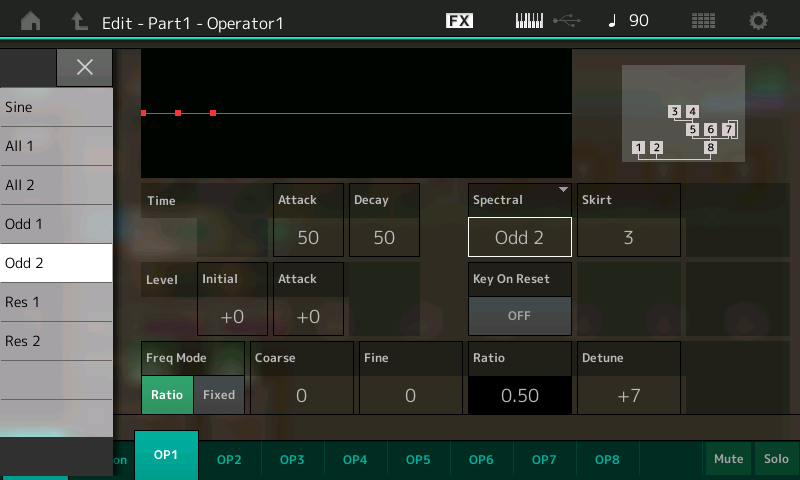
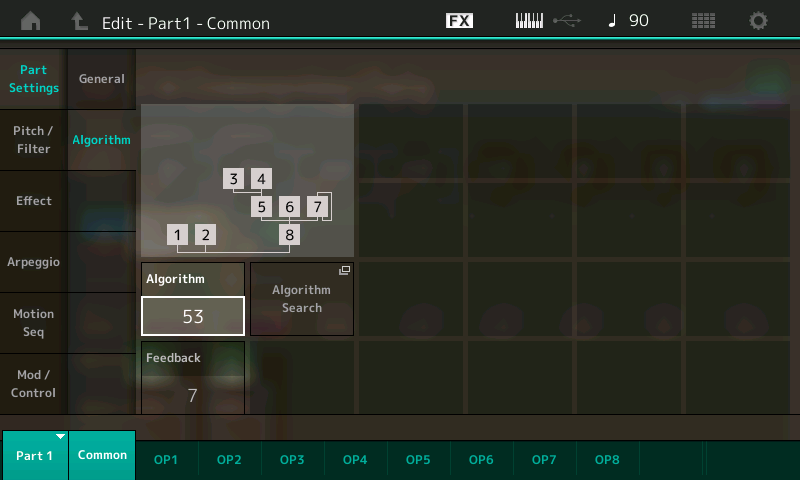
The result is a deeply programmable and controllable synthesizer engine capable of producing dynamic synthesizer sound from classic ’80s to cutting-edge modern electronic sounds. MODX features an 8-Operator, 88 Algorithm FM-X engine with 64-note polyphony. Want access to the largest synthesizer library on earth? You can use with MODX with FM Converter, a cloud-based voice converter that easily converts the voices of the DX7, DX7II, TX802 ad TX216/816 so they can be loaded into MODX.
Best of all MODX is compatible with MONTAGE Performance content and is supported by Soundmondo, the free social sound sharing service for reface, MONTAGE and MODX. Use the Google Chrome browser or the Soundmondo iOS app to access all the free content!
With over 2000 Performances, over 10000 arpeggios – and lots of room to create your own custom content – MODX delivers great sound and inspiration in an affordable and lightweight package.
Powerful Digital Signal Processing (DSP) – effects
MODX packs a lot of onboard effects. Each Performance features a Reverb, Variation, two Insertion effects, Master effect and 5-band fully parametric Master EQ. In addition to 12 types of studio-quality Reverb effects there are 85 amazing Variation and Insertion effect types like:
- VCM (Virtual Circuitry Modeling) effects that re-create the sound and behavior of vintage effect and high-end studio signal processors by modeling the circuits down to the original component level.
- Spiralizer effects that utilize the auditory illusion of the Shepard Tone for interesting pads and textures.
- Modern and Vintage tape-style delays.
- Beat Repeat effects which use both real time sampling, delay and pitch change for interesting electronic textures.
- Upward, Downward, Parallel and Multiband Compression.
MODX can run 13 Insertion Effect Blocks (2 Effects/85 types) simultaneously. That’s 26 simultaneous insertion effects in addition to Reverb, Variation and Master per Performance. No other synthesizer in its class comes close to this DSP power:
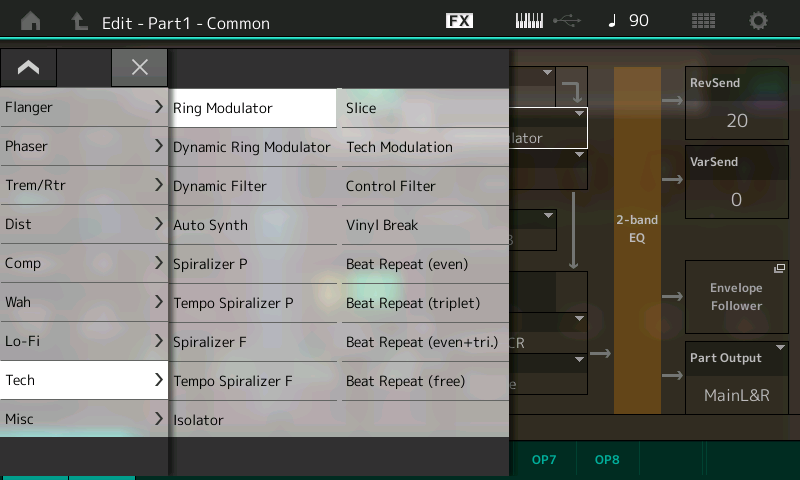
Control
7” Color Wide VGA-TFT Touchscreen
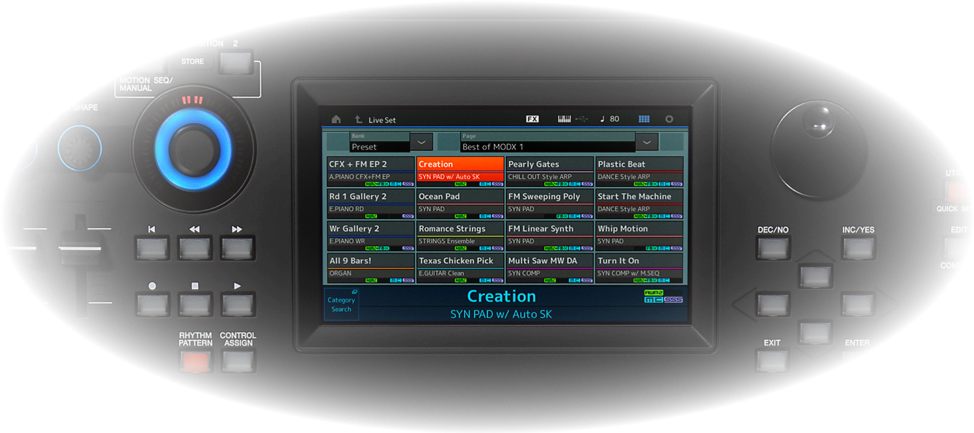
MODX features the same screen as the flagship MONTAGE Music Synthesizer. This best-in-class display is responsive and makes operation a breeze.
Performance (Home)
The dedicated [PERFORMANCE] (HOME)] button takes you the place where all the music happens in MODX. Performances in MODX can be configured for a wide range of musical situations. Performances can have eight Parts under keyboard control and each part can be layered or split across the keyboard. There are eight additional Parts can that can be select and directly played or they can be used as additional playback parts with a computer DAW.
Single Part Performances: Single Part Performances are Performances with a single active part. For those familiar with MOTIF XF or MOXF this is essentially the same as a Voice:
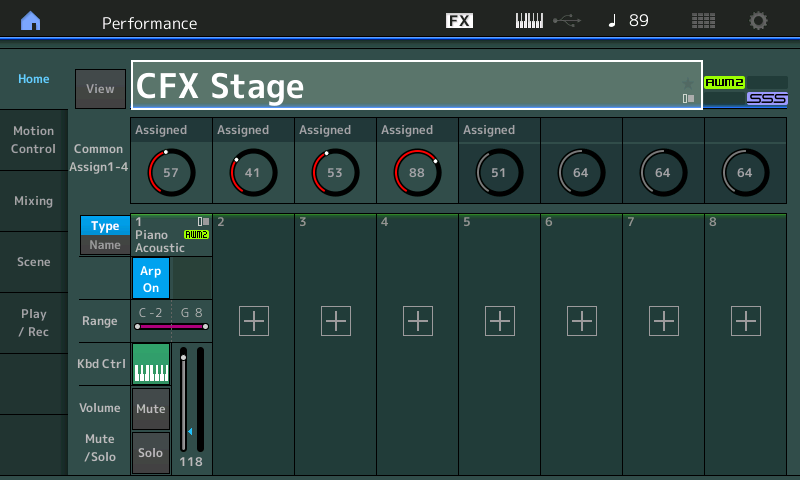
Multi Part Performances: These Performances feature more than one Part and can be configured in several different ways:
- Single Instrument Multi Part Performance: Each Part in the Performance is a component of a single instrument. A great example is the MODX Performance “CFX Concert” which features individual Parts for the soft, medium and hard velocity levels and key off sounds. The result is a remarkably expressive and captivating grand piano sound:
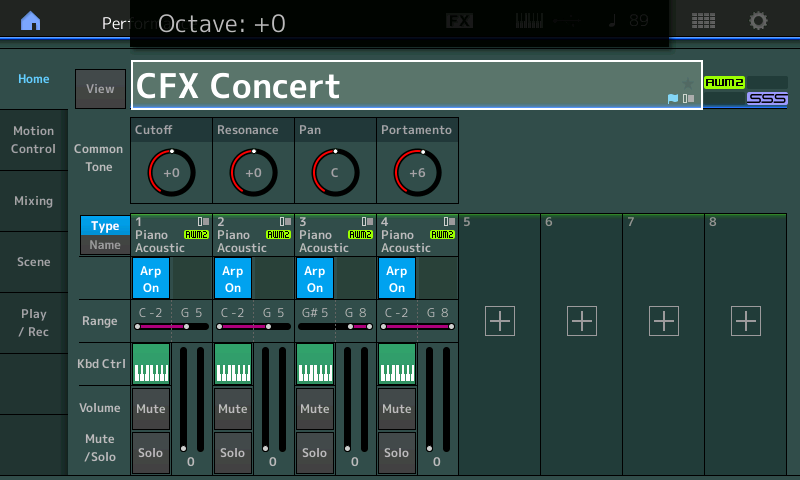
- Gallery Performances: Each Part in the Performance is a different version of the same type of instrument. “Rd Gallery” is a perfect example. In this Performance, each Part is a different historic version of a tine electric piano (60s, 70s, 80s) with complementary effects like VCM Phaser, Chorus, Retro Delay and dynamics:
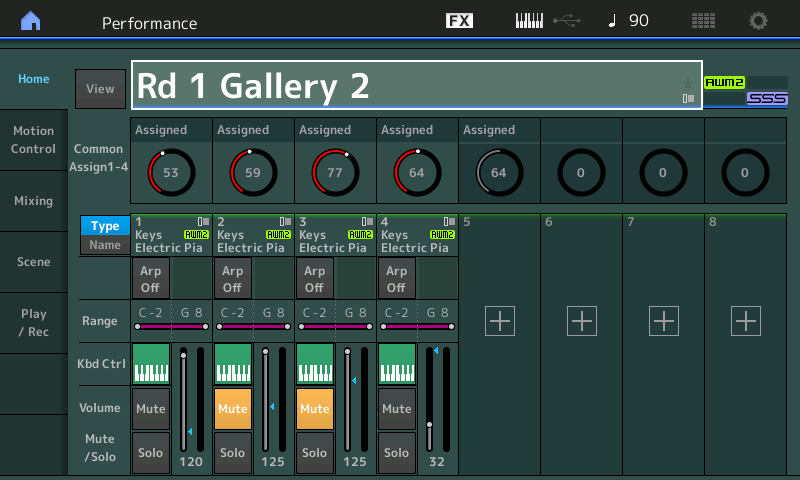
- Arpeggio Performances: With over 10000 Preset and 256 User Arpeggio types, MODX offers some great Arpeggiated Performances in a wide range of musical styles:
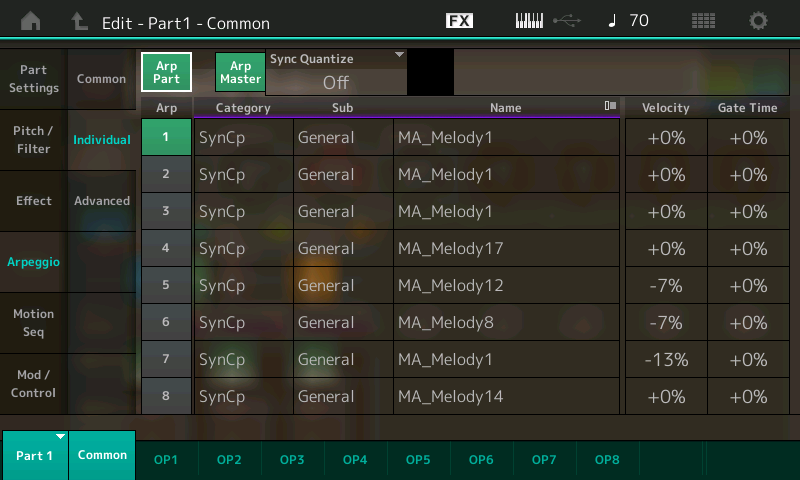
- Sectional Performances: Multipart string, brass and woodwind sections over remarkable expressiveness and range. The Super Knob can change the size of the ensemble and impart swells that alter both the volume and timbre for dramatic effect:
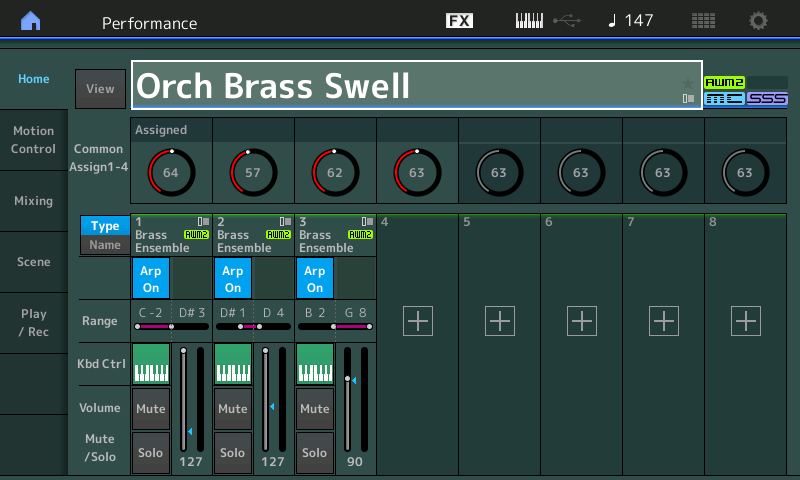
Live Set
The Live Set is a collection of up to 16 Performances. There are Preset Live Sets that are arranged by Category, and User Live Sets where you can freely arrange Performances. Live Sets are great for arranging your favorite go to Performances for quick access on the stage or in the studio:
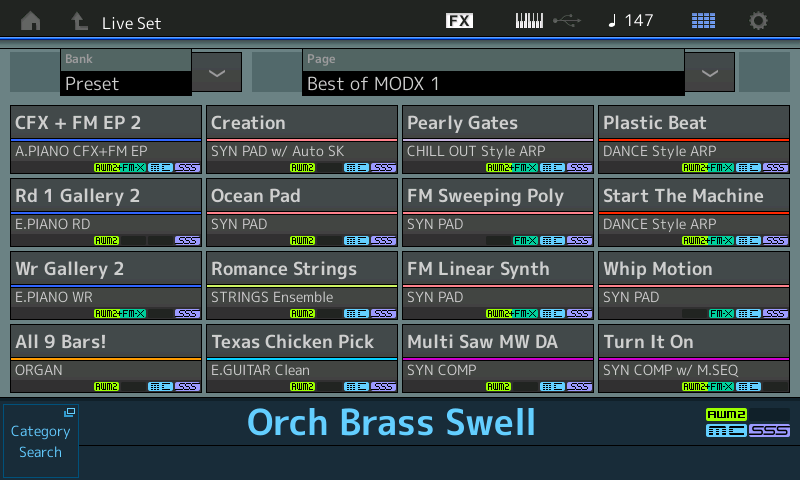
Category Search
MODX has a fantastic way to find Performances to fit your music. Category Search allows you to search for Performances by Categories like Piano, Guitar, Synth Pads, etc., but you also have a handy text search feature. Say you want to find an orchestral string Performance you played but forgot the name but remember it had the word “Seattle” in the title. Simply type in the word “Seattle” in the text area and every Performance with the word “Seattle” will appear:
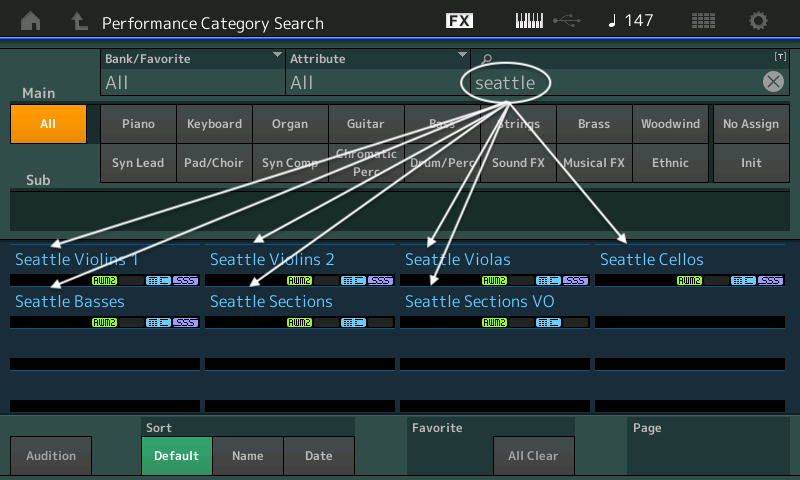
You can also search by attributes like “Single” for Single Part Performances or “FM-X” for Performances that utilize just the FM-X engine.
Super Knob and Assignable Knobs
 The Super Knob is a colorful macro control knob that simultaneously controls parameters assigned to the eight Assignable knobs (Press [ASSIGN] to toggle to Assignable Knobs 5-8). Additionally, each of the eight assignable knobs can have multiple parameters assigned to them as well. The Super Knob is the cornerstone controller of the MODX Music Synthesizer and can create musical effect like dramatic brass section swells, intriguing morphing pads and multidimensional sonic landscapes. The Super Knob can be controlled with the FC-7 foot controller pedal allowing both hands to remain on the keyboard.
The Super Knob is a colorful macro control knob that simultaneously controls parameters assigned to the eight Assignable knobs (Press [ASSIGN] to toggle to Assignable Knobs 5-8). Additionally, each of the eight assignable knobs can have multiple parameters assigned to them as well. The Super Knob is the cornerstone controller of the MODX Music Synthesizer and can create musical effect like dramatic brass section swells, intriguing morphing pads and multidimensional sonic landscapes. The Super Knob can be controlled with the FC-7 foot controller pedal allowing both hands to remain on the keyboard.
Rhythm Pattern

Sometimes all that a song needs is a good drum groove and the Rhythm Pattern feature in MODX allows you to quickly and easily select a drum kit and associated arpeggio to add to a Performance. The dedicated [RHYTHM PATTERN] button makes it easy to try out different drum kits and drum Arpeggios. It’s a certainly great feature for music creation but you can use it for practice instead of a standard metronome:
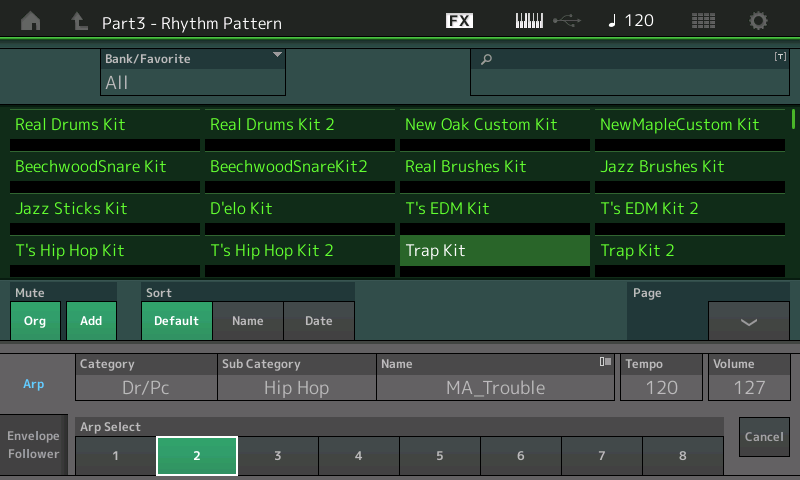
Envelope Follower
Related to the Rhythm Pattern is the Envelope Follower. The Envelope Follower converts audio into a control source for control of virtually any synthesizer parameter. For example, a drum loop could drive effects parameters for a cool rhythmic effect, or a vocal recording could control multiple parameters for a “talking” synthesizer. The audio can even be a live source through the A/D input. This is a handy way to further enhance production when adding a drum Part to your Performance: Press the Rhythm Pattern button, add a drum groove then touch the Envelope Follower tab in the Touchscreen. Your drum groove will modulate another Part. You can choose from a parameter list right from the Performance (Home) screen and try some settings out, then you can touch “Edit” to perform deeper edits:
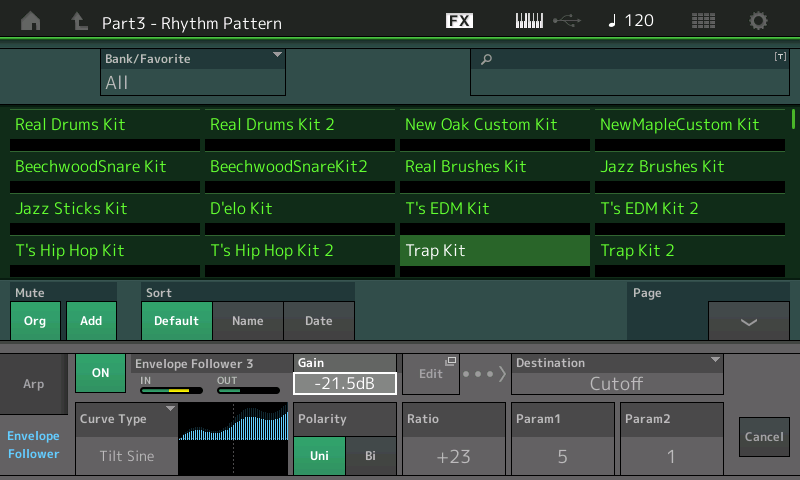 .
.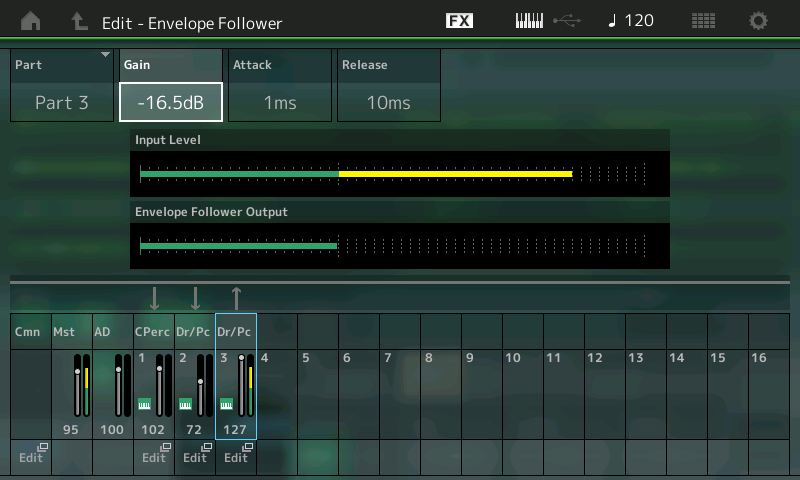 .
.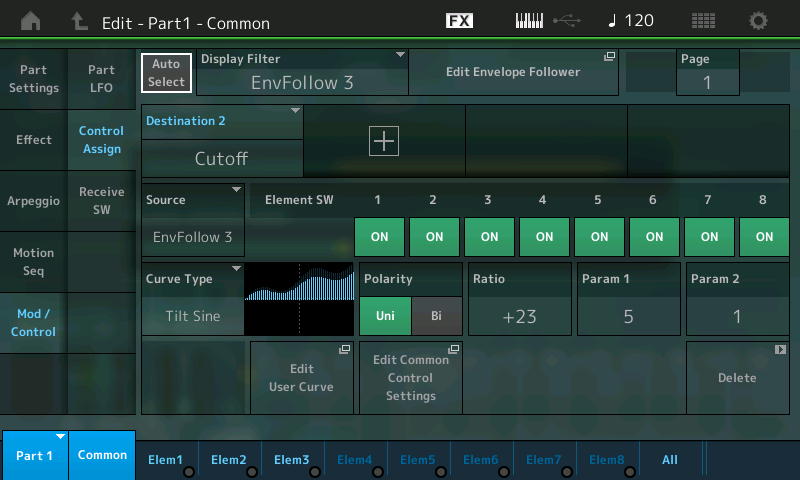
Motion Sequence
Motion Sequences are control sequences that create sound changes over time. They can be tempo-synchronized for creating rhythmic sound changes or they can move freely to create intriguing moving pads and special effects. Motion Sequences also have dedicated controls to turn them on/off, hold them at a certain point or trigger them for one-shot effects. The control knobs can be used to manipulate the amplitude depth and overall shape of the Motion Sequence:
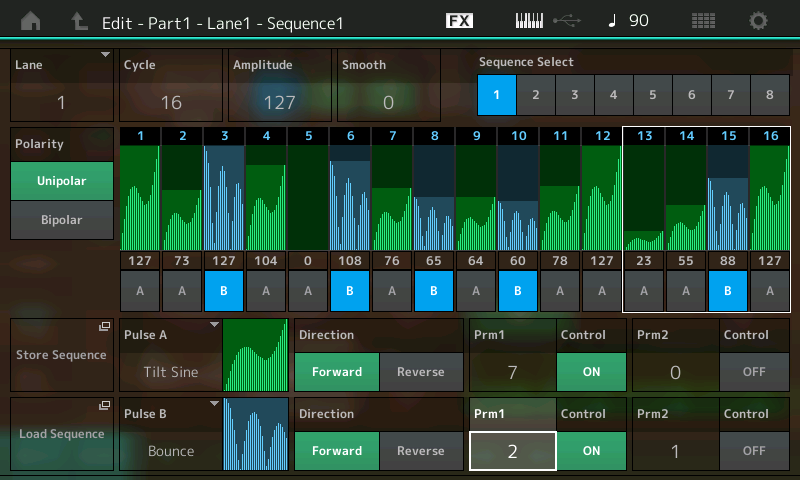
Vocoder
Any insertion effect in MODX can be a Vocoder. The Vocoder uses any audio source coming in from the A/D input like a human voice or instrument (even one of the the Parts in a Performance) and, by incorporating a series of band-pass filters accentuating different formants, impart a “robot-like” synthesizer sound:
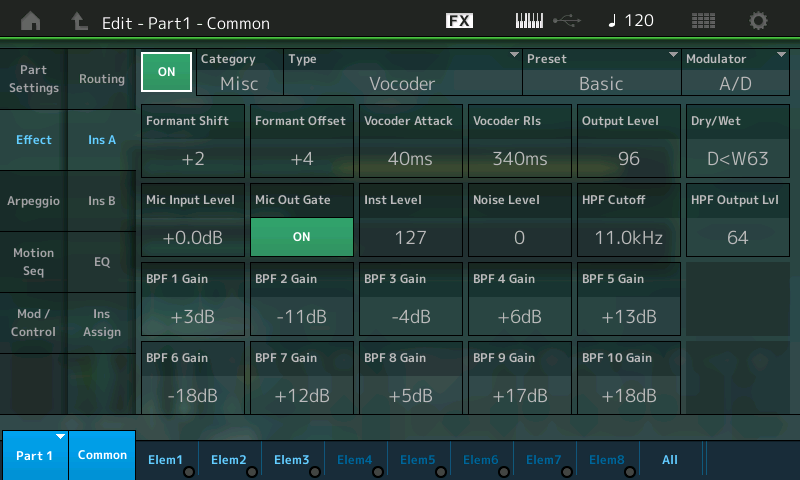
Four Knobs/Four Faders

MODX has four Control Knobs with multiple functions that are selected via the buttons to the left of the knobs. You can control filter cutoff and resonance, effect sends, amplitude envelopes and Assignable knob settings. The four Faders can mix the levels of the associated Parts. When a Part is selected you can then control individual Element or Operator levels in group of four. A push of the Part 5-8 button allows control of those Parts for Performances containing more than four Parts.
Part Select Mute/Solo
Selecting, muting and soloing Parts of a Performance is a must during editing and playing. The dedicated [PART SELECT MUTE/SOLO] brings up a handy dialog box at the bottom of the Touchscreen that quickly allows you to accomplish this.
Audition

Every Performance in MODX has an associated musical example that effectively and more importantly musically demonstrates a particular Performance in a meaningful way. Sometimes there are a host of interesting musical components contained in a Performance and it’s easy to miss some all of the possibilities. The Audition feature unlocks all these cool musical components and goes beyond a simple musical demo sequence: It features Super Knob movements, controller data, Scene switches and more. Most Audition content goes well beyond being simply a short melodic or chordal example – and is often a fully realized short composition. You can also create your own custom Audition phrase.
Scenes
A MODX Performance can contain up to eight scenes. A scene is a snapshot of many different values such as whether or not a part is playable or muted, if a Motion Sequence is active, the position of the Super Knob, which arpeggio parts are active – and so on. In addition to these Performance settings, mixing parameters such as part volume, effect levels, stereo positioning, filter, resonance, ADSR control over amplitude are also stored within the Scene. Scenes give you a considerable amount of flexibility and mix control over MODX:

Multichannel USB Audio/MIDI Interface
MODX can send 10 audio channels (configurable as five stereo channels) to a computer DAW and return four channels (2 stereo). Together with MIDI connectivity, MODX is a single cable solution: You can record MIDI and audio to a computer or play virtual instruments without an external audio or MIDI interface. You can even connect to an iOS device and record stereo audio and play virtual instruments on iPhone, iPad or iPod Touch.
A/D Input and USB Volume Monitor Knob
The A/D input processes external audio sources with the MODX DSP. Use mics, guitars or any line source as an input and process with the internal effects. You can even use these sources with the Envelope Follower, Vocoder or Sidechain input.
The dedicated USB Volume Monitor Knob controls incoming digital audio coming from a connected computer or iOS device (connected with a USB cable and an Apple Lightning to USB Connector). This is very handy to control the levels of audio tracks and virtual instruments on a computer live or in the studio:
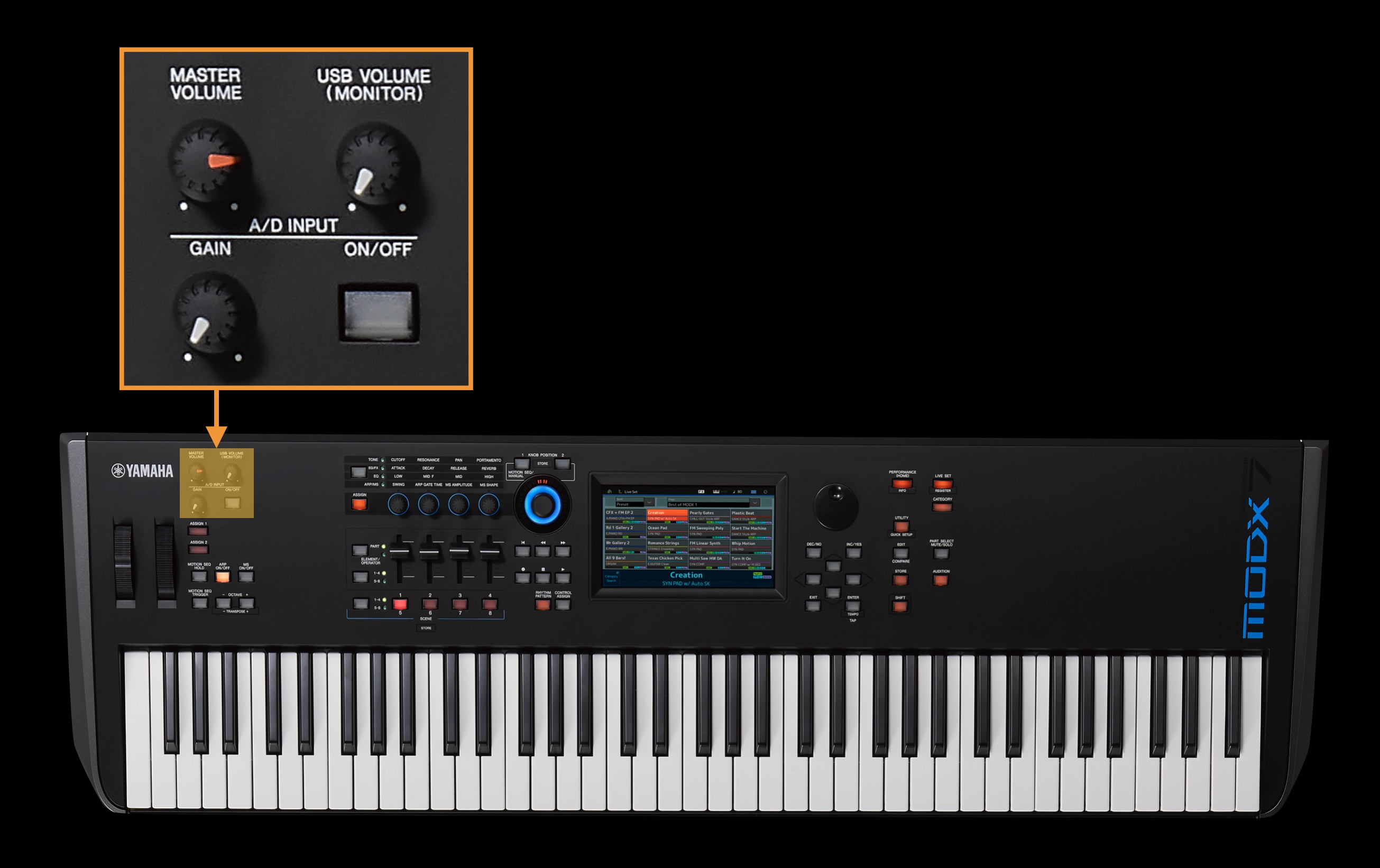
Mobility
MODX is designed to be a great sounding mobile instrument.
MODX6
Coming in at 14.5 lbs/6.6 kgs is the 61-note MODX6, a great solution for a synthesizer enthusiast needing a compact instrument capable of producing unique sounds not found in synthesizers:
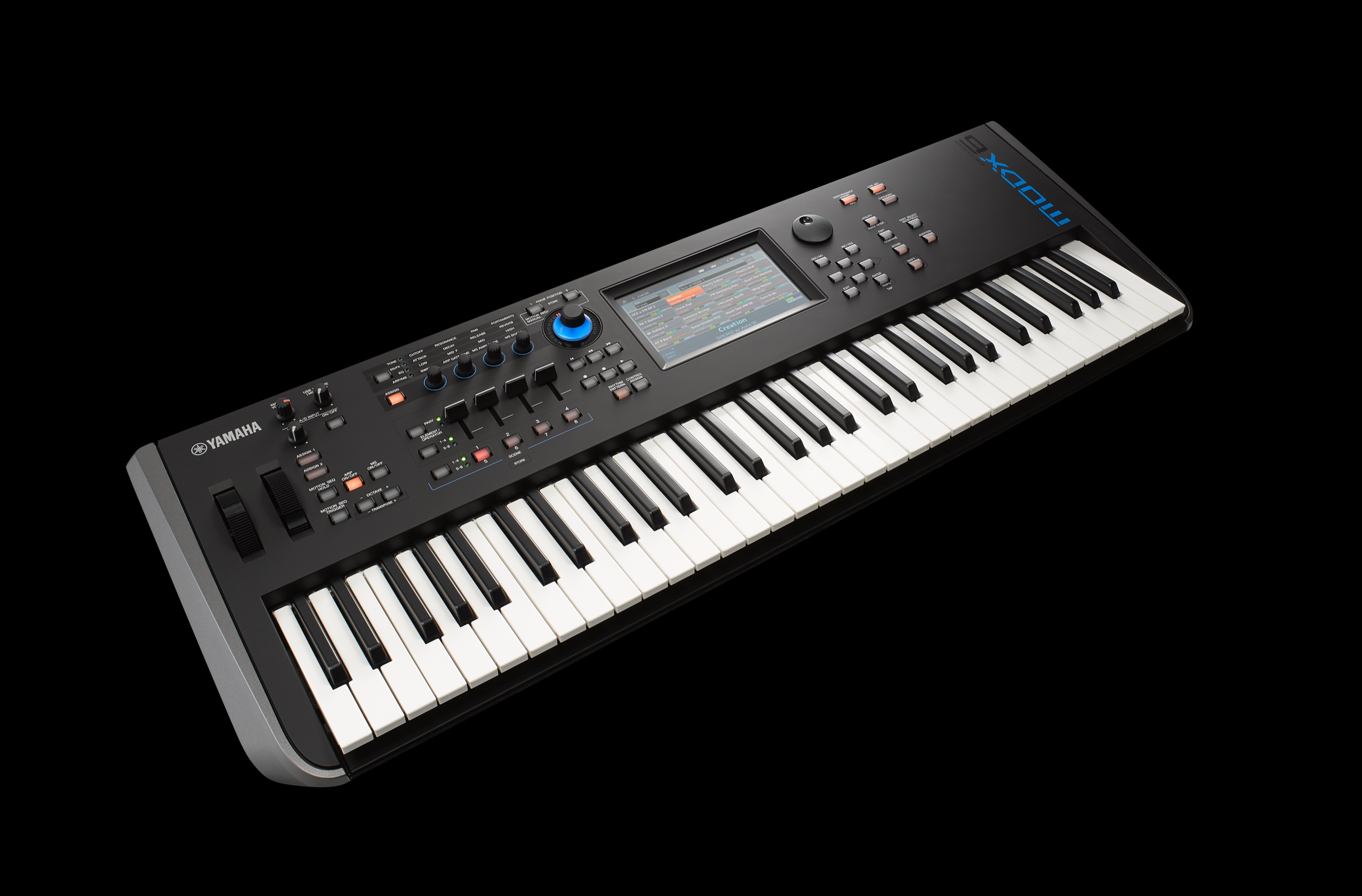
MODX7
The MODX7 is 76-notes and weighs only 16.25 lbs/7.4 kgs. MODX7 is a great choice for a keyboardist who needs more keys but still wants a lightweight great sounding solution:
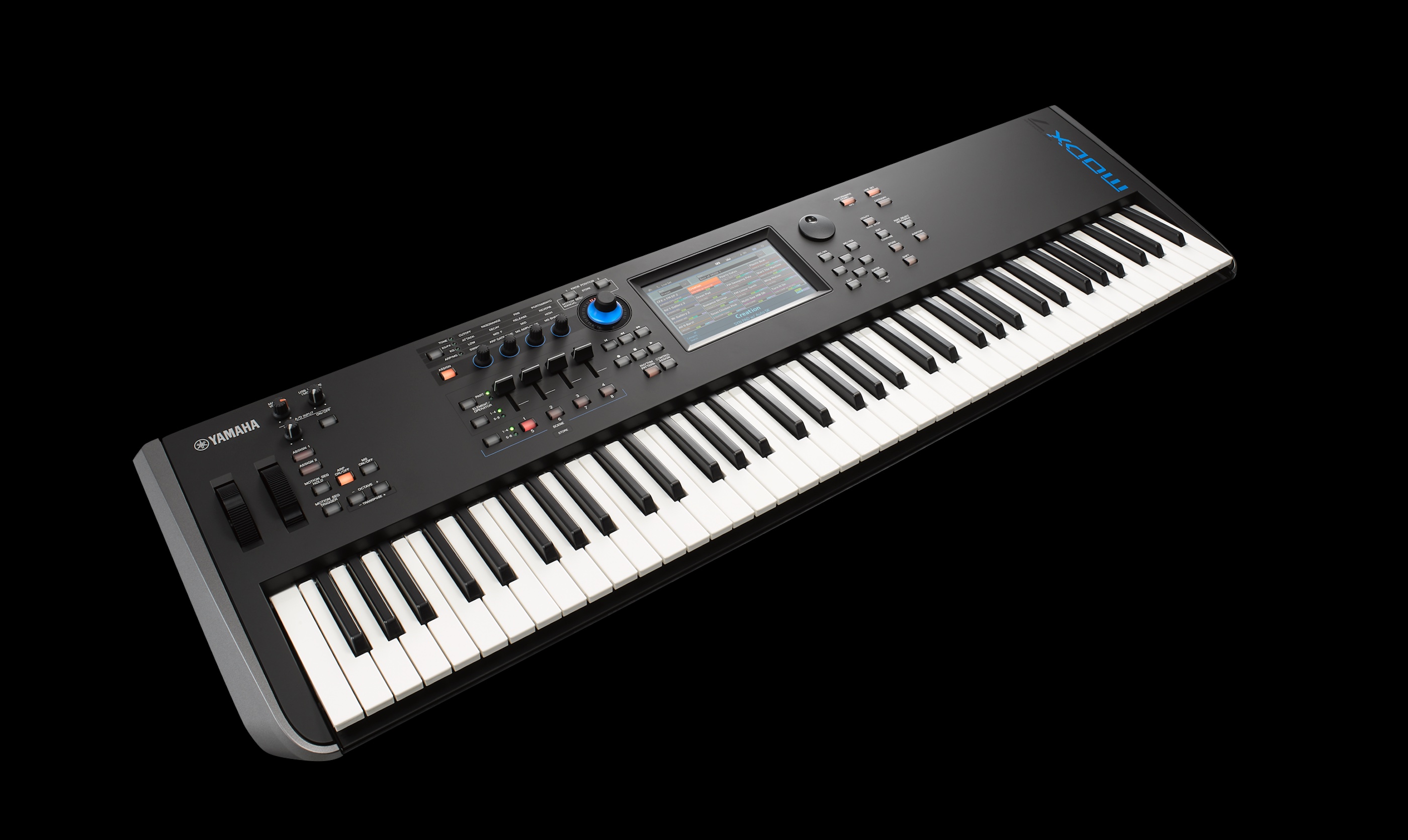
MODX8
For the pianist wanting great pianos and a powerful synthesizer engine is the MODX8. Weighing in at 30.5 lbs/13.8 kgs, MODX8 features the highly praised Graded Hammer action. The keys on the low end of MODX8 have a heavier touch in the low end and lighter touch in the high end, just like the hammers inside an acoustic piano. The familiar feel appeals to musicians who feel most comfortable with a responsive piano-like weighted action:
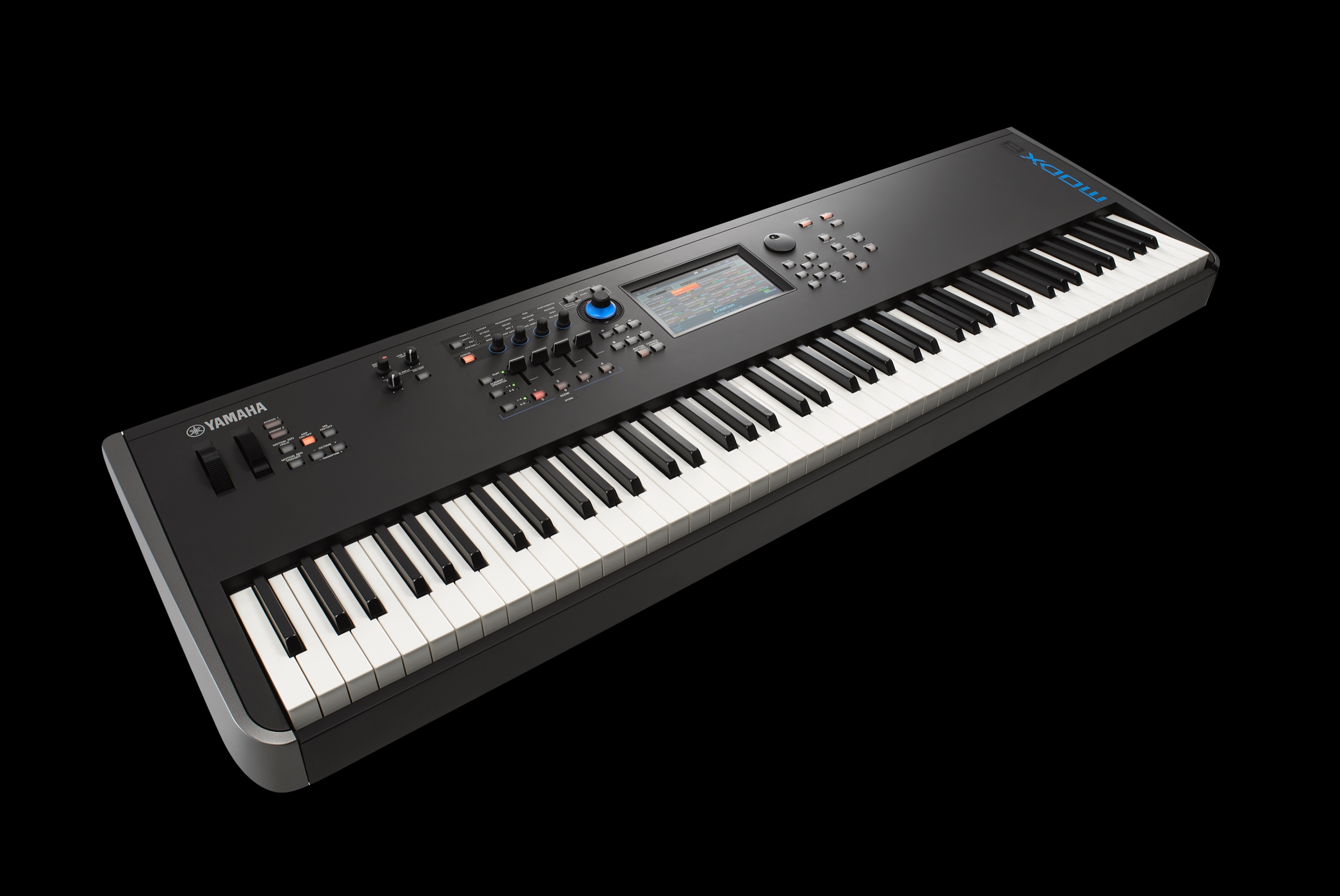
Cases
A great mobile instrument isn’t complete without a great case and the MODX soft cases provide the finishing touch:
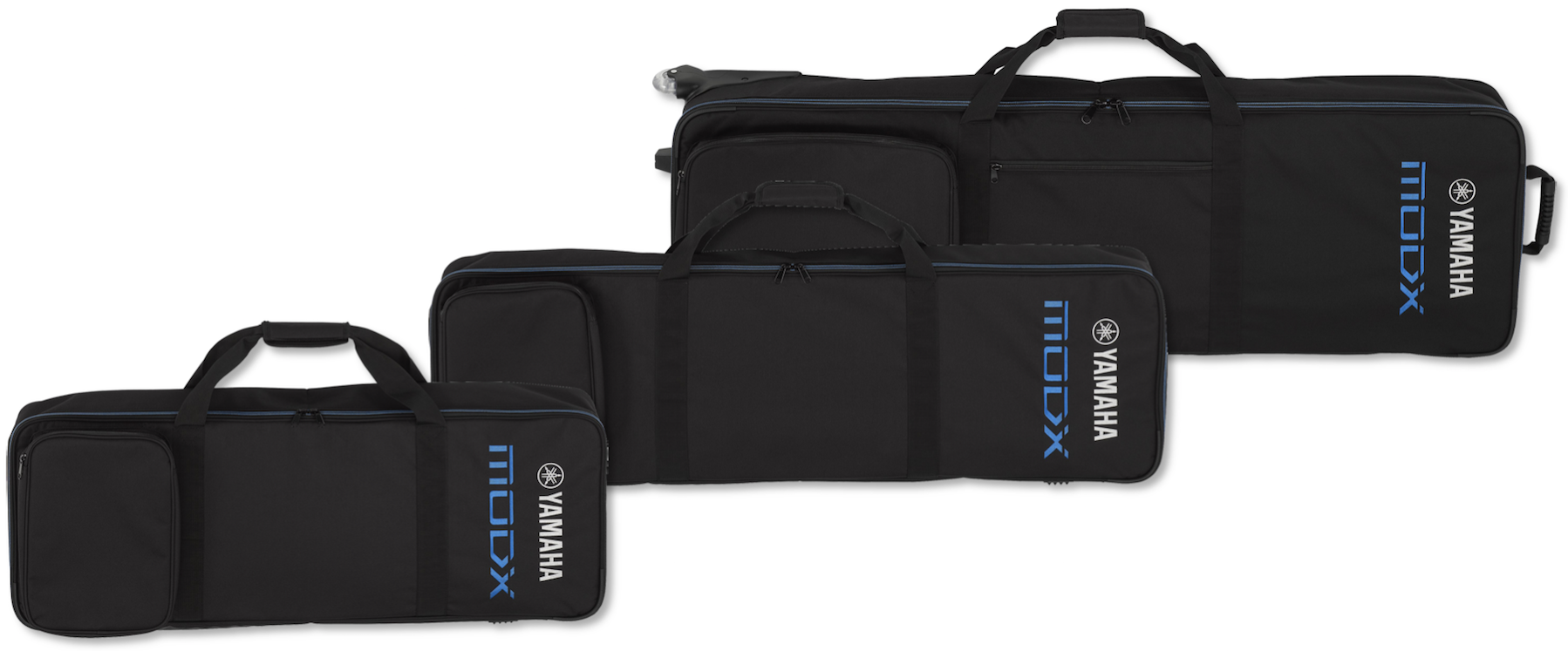
Great Sound, dynamic Control and exceptional Mobility: That is what the MODX Music Synthesizer is all about. Check out the introductory tutorial articles here and stay tuned for more about MODX.


